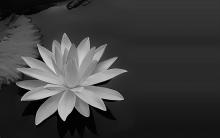Author:shashikiran
There is another unique feature in the theme of the play Mṛcchakaṭika – it is the story of a brāhmaṇa; Cārudatta is a brāhmaṇa by birth but a trader by profession; he is like a kṣattriya in the dhārmic activities he engages himself in; he had spent all his wealth by performing dāna to those in need from time to time; Vasantasenā, who was moved by this quality, comes to him offering her love.
In these literary works, the life of Cārudatta is the central theme; the story of Āryaka is of secondary importance and only serves to bolster the main plot. The fact that Cārudatta and his associates are the focal point, is attested by the name of the play – Mṛcchakaṭika. The name refers to a toy cart made out of clay; Cārudatta’s son, Rohasena refuses this mṛcchakaṭika; the play is the story of this toy cart – it was a golden cart in the past and turned into a clay one due to a sad twist of fate; it again turns golden with time.
गुप्तकाल का वास्तुशिल्प तथा मूर्तिकला
वास्तु शिल्प तथा मूर्तिकला के क्षेत्र में गुप्तकाल में असाधारण कार्य हुआ था। आज भी गुप्तकालीन उपहार के रुप में अनेक गुफा मंदिर पाये जाते है [1]।
Dr. Ganesh is a noted scholar of Indian aesthetics. Apart from studying a staggering number of works in this discipline, he has conceived original ideas, unknotted ticklish issues and provided insights into ancient concepts. He has peppered the present work with several such insights, as is his wont. Let us sample a few.
... continued from the previous episode...
यदि नवीन तथा नवीनतम शस्त्रों को विकसित किया जाता रहा जिससे सततरुप से शस्त्र भण्डार बढ़ता रहे तो लम्बे समय तक शांति-स्थापना की संभावना कहॉ रह जाती है ? सभी लोगों की आकांक्षा है कि पूरे विश्व में सब लोग उत्तम आचरण के साथ शांति पूर्ण जीवन व्यतीत करें किंतु क्या यह मात्र दिवास्वप्न नहीं है ? मात्र मौखिक रुप से शांति की घोषणाओं के दोहराने से तो सर्वव्यापी सर्वनाश को रोका नहीं जा सकता है। इससे तो विश्वनाश के उपरांत ही सब कुछ ठीक हो सकेगा !!







